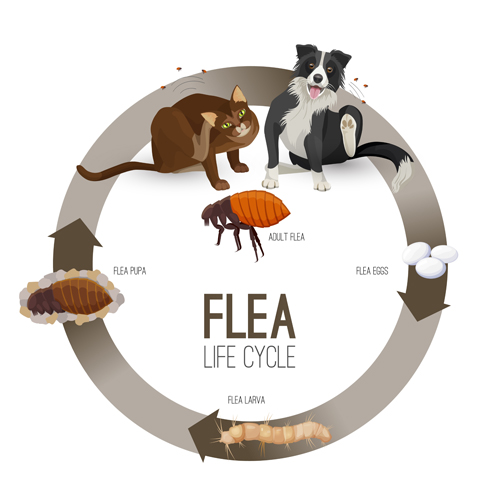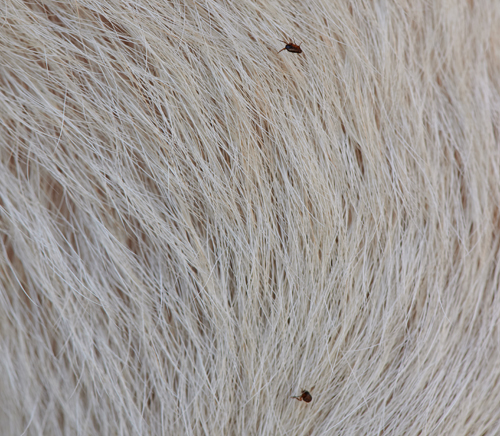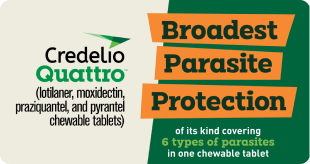Just in case you're not familiar with fleas, they are small parasites that typically jump onto dogs and cats and feed on their blood. Because they are very tiny, about 2 millimeters long, fleas can be hard to spot on pets, especially pets with dark-colored coats. Adult fleas are a reddish, brown creature with six legs and a thin flat body covered with hair. Fleas don't have wings, but they are able to jump great distances from host to host.
Flea life cycle and what they look like

Fleas go through a 4-stage lifecycle. Generally, when you see a flea, it'll be an adult flea that usually lives for about 2-3 months. Once an adult female flea has her first feeding of blood, she'll lay eggs. In just one month a female flea can lay over 2,000 eggs in a month. The eggs are less than a millimeter in size and look like a white, tiny grain of salt. Flea eggs can easily get into and attach to carpet and furniture fibers, which can be hard to completely vacuum up.
Larvae then hatch from the flea eggs. These tiny, worm-resembling larvae are white in color with pale hairs. As they prepare for the pupal stage, they feed on what is known as flea dirt, which is actually flea waste. After the larval stage, the larvae form into a cocoon that is a small and sticky casing. Pupae then emerge from the cocoons as adult fleas that feed on a host (your pet) to begin the cycle once more.
How to tell my pet has fleas?

Spotting fleas on your pet is very unlikely since they are so small in size, especially if your pet's fur is a darker color. If your pet has light fur, you might be able to see little black specs moving about the fur. You might also see flea dirt spread through your pet's fur, on bed sheets, or other surfaces your pet spends time on.
Fleas bite and suck blood from your pet as often as up to every 5 minutes, which can cause your pet pain. Each bite from a flea leaves a small red sore on your pet's skin. If your pet has fleas, you'll know by changes in behavior. It's likely your pet suffers from a flea infestation if you notice any of the following:
- Excessive scratching
- Excessive licking or grooming
- Biting at the skin
- Hair loss as a result of excessive grooming and scratching
- Small, red inflamed bumps on your pet's skin, usually in a line
- Pale gums, due to loss of blood
When are fleas most active?
Fleas can be a threat to your pets year-round, especially in warmer climates. Fleas thrive in warm temperatures with high temperature. Late spring, summer, and early fall are considered the high season when fleas become most active. Even in the offseason, fleas may still be active and hop onto your pet. Remember, prevention is the key to keep your pet safe from fleas.






































